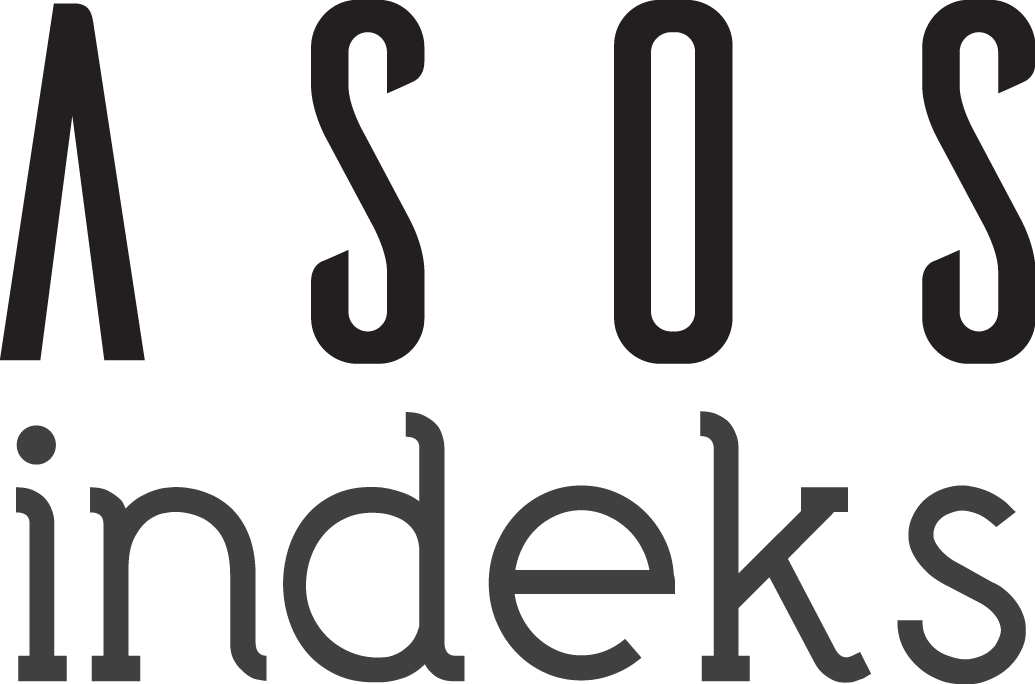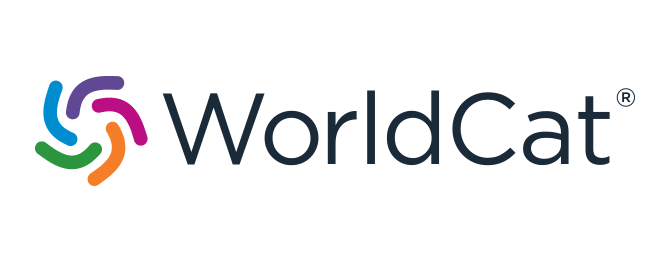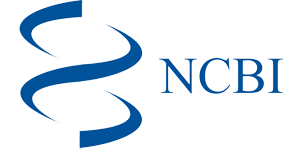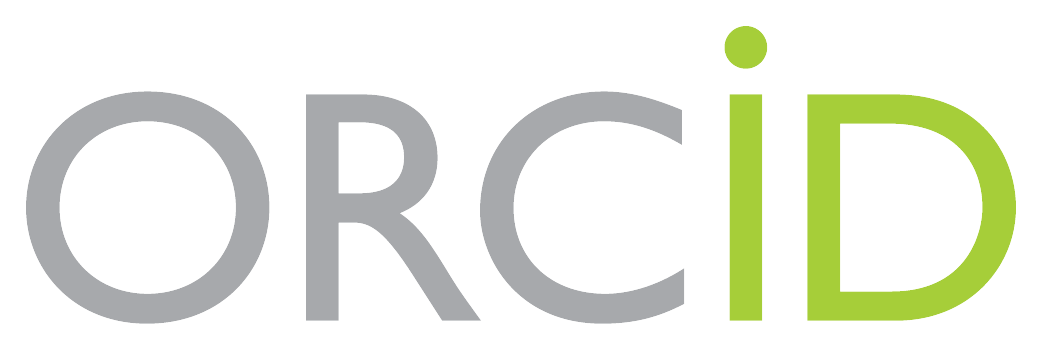Abstract
References
- Libby P, Buring JE, Badimon L, et al. Atherosclerosis. Nat Rev Dis Primers. 2019;5(1):56. doi:10.1038/s41572-019-0106-z
- Ference BA, Ginsberg HN, Graham I, et al. Low-density lipoproteins cause atherosclerotic cardiovascular disease: evidence from genetic, epidemiologic, and clinical studies. Eur Heart J. 2017;38(32):2459-2472. doi:10.1093/eurheartj/ehx144
- He FJ, Tan M, Ma Y, MacGregor GA. Salt reduction to prevent hypertension and cardiovascular disease. J Am Coll Cardiol. 2020;75(6): 632-647. doi:10.1016/j.jacc.2019.11.055
- Ekinci EI, Clarke S, Thomas MC, et al. Dietary salt intake and mortality in patients with type 2 diabetes. Diabetes Care. 2011;34(3):703-709. doi: 10.2337/dc10-1723
- World Health Organization. WHO guideline: sodium intake for adults and children. Geneva: World Health Organization; 2012. Available from: https://iris.who.int/bitstream/handle/10665/77985/9789241504836_eng.pdf
- Grimes CA, Khokhar D, Bolton KA, et al. Salt-related knowledge, attitudes and behaviors (KABs) among Victorian adults following 22-months of a consumer awareness campaign. Nutrients. 2020;12(5): 1216. doi:10.3390/nu12051216
- Institute of Medicine. Dietary reference intakes for water, potassium, sodium, chloride, and sulfate. Washington, DC: National Academies Press; 2004. Available from: http://www.nap.edu/catalog/10925.html
- Ayaz A. Tuz tüketimi ve sağlık. Ankara: Sağlık Bakanlığı; 2010. Available from: http://www.beslenme.saglik.gov.tr/content/files/yayinlar
- USDA National Nutrient Database for Standard Reference, Release 17. Content of Selected Sodium, Na (mg) Foods per Common Measure, sorted alphabetically. Available from: www.nal.usda.gov/fnic/foodcomp/Data/SR17/wtrank/sr17a307.pdf
- Gennari FJ, Sessa A, Santucci A, et al. Sodium intake and hypertension. Nutrients. 2019;11(9):1970. doi:10.3390/nu11091970
- Wang YJ, Yeh TL, Shih MC, et al. Dietary sodium intake and risk of cardiovascular disease: a systematic review and dose-response meta-analysis. Nutrients. 2020;12(10):2934. doi:10.3390/nu12102934
- Afsar B, Elsurer Afsar R, Mowaffak S. The relationship between excess sodium intake and metabolic syndrome: worth consideration? Eur J Clin Invest. 2025;55(3):e70036. doi:10.1111/eci.70036
- Balan Y, Sundaramurthy R, Gaur A, et al. Impact of high-salt diet in health and diseases and its role in pursuit of cancer immunotherapy by modulating gut microbiome. J Family Med Prim Care. 2024;13(3):1628-1635. doi:10.4103/jfmpc.jfmpc_1574_23
- Chen J, Liu X, Huang H, Zhang F, Lu Y, Hu H. High salt diet may promote progression of breast tumor through eliciting immune response. Int Immunopharmacol. 2020;87:106816. doi:10.1016/j.intimp.2020.106816
- Carbone L, Johnson CJ, Huang Y. Sodium intake and osteoporosis. Findings from the women's health initiative. J Clin Endocrinol Metab. 2016;101(4):1414-1421. doi:10.1210/jc.2015-4017
- Kleinewietfeld M, Manzel A, Titze J, et al. Sodium chloride drives autoimmune disease by the induction of pathogenic TH17 cells. Nature. 2013;496(7446):518-522. doi:10.1038/nature11868
- World Health Organization. Salt Reduction. Geneva: World Health Organization; 2016. Accessed May 2019. Available from: https://www.who.int/news-room/fact-sheets/detail/salt-reduction
- Collaborators. Health effects of dietary risks in 195 countries, 1990-2017: a systematic analysis for the Global Burden of disease study 2017. Lancet. 2019;393(10184):1958-1972. doi:10.1016/S0140-6736(19)30041-8
- Erdem Y, Arici M, Altun B, et al. The relationship between hypertension and salt intake in Turkish population: SALTURK study. Blood Press. 2010;19(5):313-318. doi:10.3109/08037051003802541
- Higashi Y, Sanada M, Sasaki S, et al. Effect of estrogen replacement therapy on endothelial function in peripheral resistance arteries in normotensive and hypertensive postmenopausal women. Hypertension. 2001;37(2):651-657. doi:10.1161/01.hyp.37.2.651
- Bigazzi R. Clustering of cardiovascular risk factors in salt-sensitive patients with essential hypertension: role of insulin. Am J Hypertens. 1996;9(2):24-27. doi:10.1016/0895-7061(95)00268-5
- Malta D. High sodium intake increases blood pressure and risk of kidney disease: from the science of salt. J Clin Hypertens. 2018;20(12):1654. doi: 10.1111/jch.13408
- Graudal N. A radical sodium reduction policy is not supported by randomized controlled trials or observational studies: grading the evidence. Am J Hypertens. 2016;29(5):543-548. doi:10.1093/ajh/hpw006
- Jackson SL, King SM, Zhao L, Cogswell ME. Prevalence of excess sodium intake in the United States: NHANES 2009–2012. MMWR Morb Mortal Wkly Rep. 2016;64(52):1393-1397. doi:10.15585/mmwr.mm6452a1
- Ganguli MC, Grimm RH, Svendsen KH, et al. Higher education and income related to a better Na-K ratio in blacks: baseline results of the TOMHS study. Am J Hypertens. 1997;10(9):979-984. doi:10.1016/s0895-7061(97)00162-3
- Yi SS, Kansagra SM. Association of sodium intake with obesity, body-mass index, waist circumference and weight. Am J Prev Med. 2014;45(6): 53-55. doi:10.1016/j.amepre.2014.02.005
- Gelber RP, Gaziano M, Manson JE, Buring JE, Sesso HD. A prospective study of body mass index and the risk of developing hypertension in men. Am J Hypertens. 2007;20(4):370-377. doi:10.1016/j.amjhyper.2006.10.011
- Chen J, Gu D, Huang J, et al. Metabolic syndrome and salt sensitivity of blood pressure in non-diabetic people in China: a dietary intervention study. Lancet. 2009;373(9666):829-835. doi:10.1016/S0140-6736(09) 60144-6
- Yoon YS, Oh SW. Sodium density and obesity: the Korea National Health and Nutrition Examination Survey 2007-2010. Eur J Clin Nutr. 2013;67(2):141-146. doi:10.1038/ejcn.2012.204
- Zhou L, Stamler J, Chan Q, et al. Salt intake and prevalence of overweight/obesity in Japan, China, the United Kingdom, and the United States: the INTERMAP study. Am J Clin Nutr. 2019;110(1):34-40. doi:10.1093/ajcn/nqz067
- Haron H, Hiew I, Shahar S, et al. A survey on salt content labeling of the processed food available in Malaysia. Int J Environ Res Public Health. 2020;17(7):2469. doi:10.3390/ijerph17072469
- World Health Organization. Global health risks: mortality and burden of disease attributable to selected major risks. Geneva: World Health Organization; 2009.
- Bhat S, Marklund M, Henry ME, et al. A systematic review of the sources of dietary salt around the world. Adv Nutr. 2020;11(3):677-686. doi:10.1093/advances/nmz134
- U.S. Food and Drug Administration. Sodium in your diet. 2020. Available from: https://www.fda.gov/food/nutrition-education-resources-materials/sodium-your-diet. Accessed February 4, 2025.
- Akpolat T, Kadi R, Utaş C. Hypertension, salt, and bread. Am J Kidney Dis. 2009;53(6):1103-1110. doi:10.1053/j.ajkd.2009.03.005
- Erdem Y, Akpolat T, Derici Ü. Dietary sources of high sodium intake in Turkey: SALTURK II. Nutrients. 2017;9(9):933. doi:10.3390/nu9090933
Abstract
Aims: Excessive dietary salt intake is a major contributor to cardiovascular morbidity and mortality. Patients with elevated lowdensity lipoprotein cholesterol (LDL-C) are at increased risk, but there is limited data on their salt knowledge and habits. This study aimed to assess salt-related knowledge and dietary behaviour in patients with hyperlipidaemia.
Methods: A prospective cross-sectional study was conducted among 100 patients with LDL-C ≥160 mg/dl attending the Internal Medicine Outpatient Clinic of Ondokuz Mayıs University. Participants completed three face-to-face questionnaires assessing demographic and clinical characteristics, salt knowledge (20-item test), and frequency of consumption of salty foods. Data were analysed using descriptive statistics and comparison tests (t-test, Mann-Whitney U, Chi-square), with p<0.05 considered statistically significant.
Results: Salt knowledge scores ranged from 5 to 19 correct answers. Patients with higher education had significantly better salt knowledge (p<0.0001), whereas older adults and married individuals had lower scores. There were no significant differences according to sex, BMI or self-reported low-salt diet. Only 10% of participants reported receiving education about salt intake. Feta cheese was the most commonly consumed salty food, while unsalted bread was rarely preferred. Despite high LDL-C levels, many patients lacked an adequate understanding of the health risks associated with salt.
Conclusion: There is a substantial gap in salt-related knowledge in patients with high LDL-C, particularly in older and less educated individuals. Targeted educational interventions addressing salt consumption may improve dietary practices and support cardiovascular risk reduction in this vulnerable group.
Ethical Statement
Retrospective ethics committee approval is not required for articles that have been used before 2020, produced from master's/doctoral studies (must be stated in the article), submitted an application for publication to the journal in the previous year, accepted but not yet published
References
- Libby P, Buring JE, Badimon L, et al. Atherosclerosis. Nat Rev Dis Primers. 2019;5(1):56. doi:10.1038/s41572-019-0106-z
- Ference BA, Ginsberg HN, Graham I, et al. Low-density lipoproteins cause atherosclerotic cardiovascular disease: evidence from genetic, epidemiologic, and clinical studies. Eur Heart J. 2017;38(32):2459-2472. doi:10.1093/eurheartj/ehx144
- He FJ, Tan M, Ma Y, MacGregor GA. Salt reduction to prevent hypertension and cardiovascular disease. J Am Coll Cardiol. 2020;75(6): 632-647. doi:10.1016/j.jacc.2019.11.055
- Ekinci EI, Clarke S, Thomas MC, et al. Dietary salt intake and mortality in patients with type 2 diabetes. Diabetes Care. 2011;34(3):703-709. doi: 10.2337/dc10-1723
- World Health Organization. WHO guideline: sodium intake for adults and children. Geneva: World Health Organization; 2012. Available from: https://iris.who.int/bitstream/handle/10665/77985/9789241504836_eng.pdf
- Grimes CA, Khokhar D, Bolton KA, et al. Salt-related knowledge, attitudes and behaviors (KABs) among Victorian adults following 22-months of a consumer awareness campaign. Nutrients. 2020;12(5): 1216. doi:10.3390/nu12051216
- Institute of Medicine. Dietary reference intakes for water, potassium, sodium, chloride, and sulfate. Washington, DC: National Academies Press; 2004. Available from: http://www.nap.edu/catalog/10925.html
- Ayaz A. Tuz tüketimi ve sağlık. Ankara: Sağlık Bakanlığı; 2010. Available from: http://www.beslenme.saglik.gov.tr/content/files/yayinlar
- USDA National Nutrient Database for Standard Reference, Release 17. Content of Selected Sodium, Na (mg) Foods per Common Measure, sorted alphabetically. Available from: www.nal.usda.gov/fnic/foodcomp/Data/SR17/wtrank/sr17a307.pdf
- Gennari FJ, Sessa A, Santucci A, et al. Sodium intake and hypertension. Nutrients. 2019;11(9):1970. doi:10.3390/nu11091970
- Wang YJ, Yeh TL, Shih MC, et al. Dietary sodium intake and risk of cardiovascular disease: a systematic review and dose-response meta-analysis. Nutrients. 2020;12(10):2934. doi:10.3390/nu12102934
- Afsar B, Elsurer Afsar R, Mowaffak S. The relationship between excess sodium intake and metabolic syndrome: worth consideration? Eur J Clin Invest. 2025;55(3):e70036. doi:10.1111/eci.70036
- Balan Y, Sundaramurthy R, Gaur A, et al. Impact of high-salt diet in health and diseases and its role in pursuit of cancer immunotherapy by modulating gut microbiome. J Family Med Prim Care. 2024;13(3):1628-1635. doi:10.4103/jfmpc.jfmpc_1574_23
- Chen J, Liu X, Huang H, Zhang F, Lu Y, Hu H. High salt diet may promote progression of breast tumor through eliciting immune response. Int Immunopharmacol. 2020;87:106816. doi:10.1016/j.intimp.2020.106816
- Carbone L, Johnson CJ, Huang Y. Sodium intake and osteoporosis. Findings from the women's health initiative. J Clin Endocrinol Metab. 2016;101(4):1414-1421. doi:10.1210/jc.2015-4017
- Kleinewietfeld M, Manzel A, Titze J, et al. Sodium chloride drives autoimmune disease by the induction of pathogenic TH17 cells. Nature. 2013;496(7446):518-522. doi:10.1038/nature11868
- World Health Organization. Salt Reduction. Geneva: World Health Organization; 2016. Accessed May 2019. Available from: https://www.who.int/news-room/fact-sheets/detail/salt-reduction
- Collaborators. Health effects of dietary risks in 195 countries, 1990-2017: a systematic analysis for the Global Burden of disease study 2017. Lancet. 2019;393(10184):1958-1972. doi:10.1016/S0140-6736(19)30041-8
- Erdem Y, Arici M, Altun B, et al. The relationship between hypertension and salt intake in Turkish population: SALTURK study. Blood Press. 2010;19(5):313-318. doi:10.3109/08037051003802541
- Higashi Y, Sanada M, Sasaki S, et al. Effect of estrogen replacement therapy on endothelial function in peripheral resistance arteries in normotensive and hypertensive postmenopausal women. Hypertension. 2001;37(2):651-657. doi:10.1161/01.hyp.37.2.651
- Bigazzi R. Clustering of cardiovascular risk factors in salt-sensitive patients with essential hypertension: role of insulin. Am J Hypertens. 1996;9(2):24-27. doi:10.1016/0895-7061(95)00268-5
- Malta D. High sodium intake increases blood pressure and risk of kidney disease: from the science of salt. J Clin Hypertens. 2018;20(12):1654. doi: 10.1111/jch.13408
- Graudal N. A radical sodium reduction policy is not supported by randomized controlled trials or observational studies: grading the evidence. Am J Hypertens. 2016;29(5):543-548. doi:10.1093/ajh/hpw006
- Jackson SL, King SM, Zhao L, Cogswell ME. Prevalence of excess sodium intake in the United States: NHANES 2009–2012. MMWR Morb Mortal Wkly Rep. 2016;64(52):1393-1397. doi:10.15585/mmwr.mm6452a1
- Ganguli MC, Grimm RH, Svendsen KH, et al. Higher education and income related to a better Na-K ratio in blacks: baseline results of the TOMHS study. Am J Hypertens. 1997;10(9):979-984. doi:10.1016/s0895-7061(97)00162-3
- Yi SS, Kansagra SM. Association of sodium intake with obesity, body-mass index, waist circumference and weight. Am J Prev Med. 2014;45(6): 53-55. doi:10.1016/j.amepre.2014.02.005
- Gelber RP, Gaziano M, Manson JE, Buring JE, Sesso HD. A prospective study of body mass index and the risk of developing hypertension in men. Am J Hypertens. 2007;20(4):370-377. doi:10.1016/j.amjhyper.2006.10.011
- Chen J, Gu D, Huang J, et al. Metabolic syndrome and salt sensitivity of blood pressure in non-diabetic people in China: a dietary intervention study. Lancet. 2009;373(9666):829-835. doi:10.1016/S0140-6736(09) 60144-6
- Yoon YS, Oh SW. Sodium density and obesity: the Korea National Health and Nutrition Examination Survey 2007-2010. Eur J Clin Nutr. 2013;67(2):141-146. doi:10.1038/ejcn.2012.204
- Zhou L, Stamler J, Chan Q, et al. Salt intake and prevalence of overweight/obesity in Japan, China, the United Kingdom, and the United States: the INTERMAP study. Am J Clin Nutr. 2019;110(1):34-40. doi:10.1093/ajcn/nqz067
- Haron H, Hiew I, Shahar S, et al. A survey on salt content labeling of the processed food available in Malaysia. Int J Environ Res Public Health. 2020;17(7):2469. doi:10.3390/ijerph17072469
- World Health Organization. Global health risks: mortality and burden of disease attributable to selected major risks. Geneva: World Health Organization; 2009.
- Bhat S, Marklund M, Henry ME, et al. A systematic review of the sources of dietary salt around the world. Adv Nutr. 2020;11(3):677-686. doi:10.1093/advances/nmz134
- U.S. Food and Drug Administration. Sodium in your diet. 2020. Available from: https://www.fda.gov/food/nutrition-education-resources-materials/sodium-your-diet. Accessed February 4, 2025.
- Akpolat T, Kadi R, Utaş C. Hypertension, salt, and bread. Am J Kidney Dis. 2009;53(6):1103-1110. doi:10.1053/j.ajkd.2009.03.005
- Erdem Y, Akpolat T, Derici Ü. Dietary sources of high sodium intake in Turkey: SALTURK II. Nutrients. 2017;9(9):933. doi:10.3390/nu9090933
Details
| Primary Language | English |
|---|---|
| Subjects | Nefroloji |
| Journal Section | Research Articles |
| Authors | |
| Publication Date | May 30, 2025 |
| Submission Date | April 8, 2025 |
| Acceptance Date | May 14, 2025 |
| Published in Issue | Year 2025 Volume: 7 Issue: 3 |
TR DİZİN ULAKBİM and International Indexes (1b)
Interuniversity Board (UAK) Equivalency: Article published in Ulakbim TR Index journal [10 POINTS], and Article published in other (excuding 1a, b, c) international indexed journal (1d) [5 POINTS]
Note: Our journal is not WOS indexed and therefore is not classified as Q.
You can download Council of Higher Education (CoHG) [Yüksek Öğretim Kurumu (YÖK)] Criteria) decisions about predatory/questionable journals and the author's clarification text and journal charge policy from your browser. https://dergipark.org.tr/tr/journal/3449/file/4924/show
Journal Indexes and Platforms:
TR Dizin ULAKBİM, Google Scholar, Crossref, Worldcat (OCLC), DRJI, EuroPub, OpenAIRE, Turkiye Citation Index, Turk Medline, ROAD, ICI World of Journal's, Index Copernicus, ASOS Index, General Impact Factor, Scilit.The indexes of the journal's are;
The platforms of the journal's are;
|
The indexes/platforms of the journal are;
TR Dizin Ulakbim, Crossref (DOI), Google Scholar, EuroPub, Directory of Research Journal İndexing (DRJI), Worldcat (OCLC), OpenAIRE, ASOS Index, ROAD, Turkiye Citation Index, ICI World of Journal's, Index Copernicus, Turk Medline, General Impact Factor, Scilit
Journal articles are evaluated as "Double-Blind Peer Review"
All articles published in this journal are licensed under a Creative Commons Attribution 4.0 International License (CC BY 4.0)














